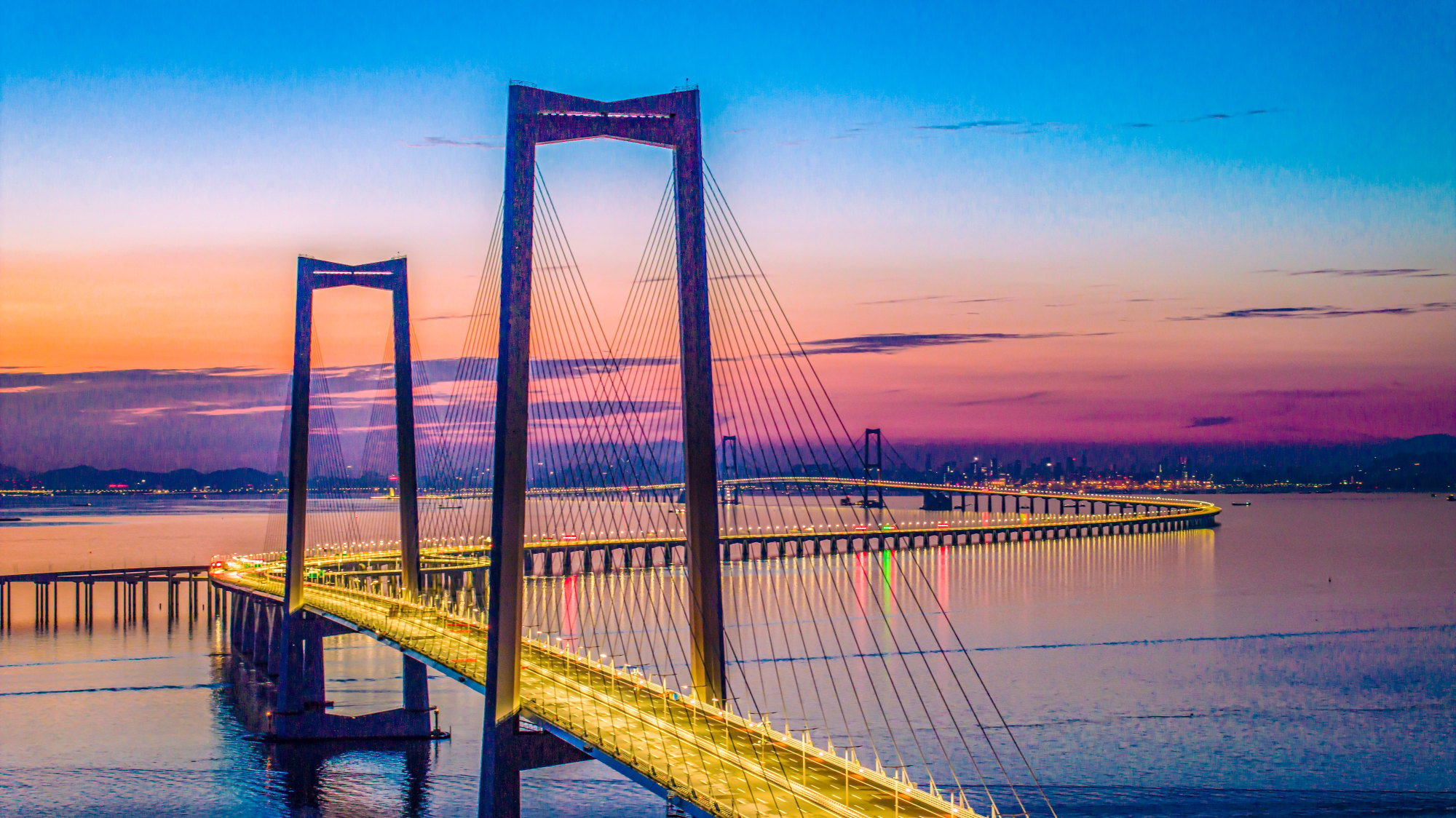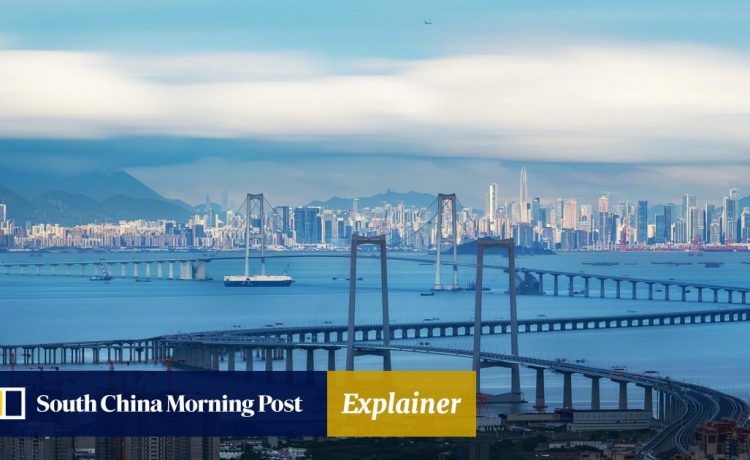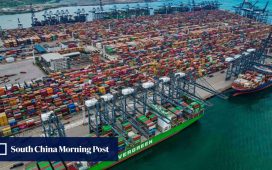The new link will provide an alternative to this route and cut the travel time between Shenzhen and Zhongshan from at least two hours to as little as 25 minutes.
The new crossing also formed part of planned infrastructure to create a “one-hour traffic circle” in the Greater Bay Area.
2. What are the key features?
The mega project comprises two bridges, two artificial islands and the world’s longest and widest undersea steel shell concrete tube tunnel at 6.8km in length and 46 metres (151 feet) in width.
Light strips in the tunnel change colour according to the ambient temperature and traffic conditions.
In the case of an emergency, the strips turn red, yellow or green to help guide drivers to safe evacuation points.
The Lingdingyang Bridge, a key part of the link, boasts a main span measuring 1.66km in length and 270 metres in height. It is the world’s largest offshore steel box girder suspension bridge.
Of the two artificial islands in the project, the western one is diamond shaped, resembling a “kite in the sea”, while the eastern one covers an area equivalent to 48 standard football fields.
3. How does it compare with the Hong Kong-Zhuhai-Macau Bridge?
Opened in 2018, the 55km-long Hong Kong-Zhuhai-Macau Bridge consists of a series of three cable-stayed bridges, an undersea tunnel and four artificial islands. It is both the longest sea crossing and the longest open-sea fixed link in the world.
It spans the Lingding and Jiuzhou channels, connecting Hong Kong, Macau, and Zhuhai. A journey from the Hong Kong entry point to Macau takes about 40 minutes.
Construction cost about HK$120 billion, around 2.5 times the HK$48 billion spent on the Shenzhen-Zhongshan Link.

4. How will Hong Kong’s logistics sector be affected?
Hong Kong lawmaker Ben Chan Han-pan, also chairman of the legislature’s transport panel, said the opening of the new link could boost the competitiveness of the logistics sector in neighbouring Shenzhen.
“Now that the link connects to Shenzhen’s airport, and given the reduced travel time and cost, some trucks may use the new bridge to go to Shenzhen. It poses direct competition to Hong Kong,” he said.
Stanley Tandon Lal Chaing, the chairman of the Hong Kong Land Transport Council, said: “Apart from higher tolls and longer travelling distances, there are immigration restrictions and permit procedures for using the Hong Kong-Zhuhai-Macau Bridge. The Zhongshan forwarders can save all these troubles if they send the goods to Shenzhen instead.”
But Willy Lin Sun-mo, the chairman of the Hong Kong Shippers’ Council, disagreed.
“With the new link, goods in Hong Kong can reach more of the cities on the west side of Pearl River more efficiently. It can expand the business of our logistics trade,” Lin said.
He added that he also believed the link could help increase the flow of people heading to Shenzhen and even Hong Kong.
5. What will be the impact on connectivity?
The bay area is home to about 86 million people and encompasses Hong Kong, Macau and nine cities in Guangdong, including Zhongshan and Shenzhen.
The new bridge, along with existing structures such as the Hong Kong-Zhuhai-Macau Bridge, form a network of sea and river crossings designed to strengthen connectivity between bay area cities.







